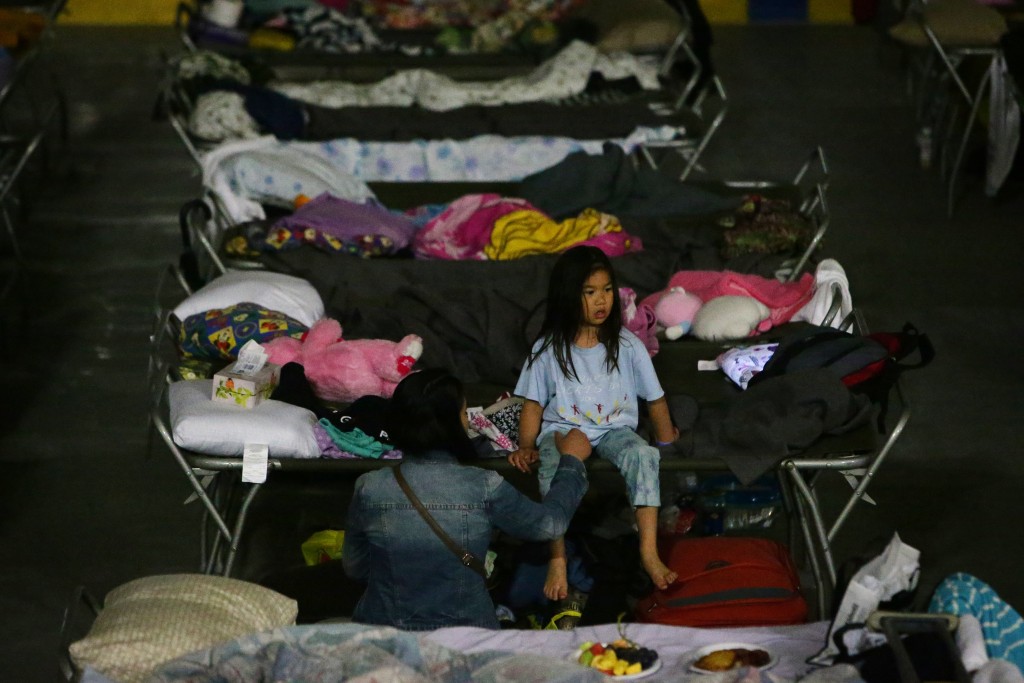
by Michel COMTE
WANDERING RIVER , Canada (AFP) — A handful of abandoned cars wrapped in yellow police ribbons still lined the ditches along the main roadway to Fort McMurray Thursday, days after a massive exodus from the wildfire-stricken Canadian city.
The bumper-to-bumper traffic that had clogged the roadway in recent days has dissipated.
Only a few government and emergency vehicles still speed up and down Highway 63, which has been closed to non-essential traffic from its intersection with Highway 55, about 250 kilometers (155 miles) south of Fort McMurray.
The clerk at the Husky gas station, who did not wish to give his name, in Wandering River, which is barely inside the restricted zone, recalled lines of vehicles stretching several kilometers (miles) waiting to fill up Tuesday and Wednesday.
A few people gassed up and dashed without paying, he lamented, which led him to demand cash upfront from the rest. The government has since urged evacuees to keep fuel and food receipts for possible reimbursement later.
The hamlet is the last stop en route to Fort McMurray. Only dense wilderness and 200 kilometers (125 miles) of roadway separate the two points.
The clerk said he sold more 500,000 litres of gasoline to passing motorists over two days during the evacuation of nearly 100,000 people — one of the largest in Canadian history. That’s 60 times more gasoline sold than on a typical day on this usually busy roadway.
He described a frantic push by Fort McMurray residents to escape the raging wildfires, leading to a crush of cars and not enough gasoline to go around.
‘So much traffic’
Many became stranded, such as Ivy White and her son Andrew.
“When we left Fort McMurray there was so much traffic and we only had one quarter of a tank of gas,” she explained.
Nearby barracks used seasonally by up to 600 pipeline workers were opened to accomodate her and 400 other evacuees.
Joe MacAulay, who runs the Canada North camp, said he and officials drove up and down Highway 63 offering to put up and feed people they found sleeping in their cars, at the makeshift site.
Andrew Stannix arrived here after wandering aimlessly in his motorhome on the outskirts of the fire zone for days, with his wife and their pets, since evacuating Fort McMurray two days earlier.
He’s not sure if he will stay or where he might go next. “We’re going wherever there’s no fire, I guess,” he said.
Gord Bell, with his adult son, said he likes the temporary accommodations at the pipeline barracks because they are closest to home.
Whereas thousands fled south to major cities Edmonton and Calgary and other municipalities, Bell said, “We want to be first in line to go back” to Fort McMurray.
“I don’t plan to abandon Fort McMurray. It’s my home and I want to stay,” he said.
Recognizing that the devastated city would likely have to be rebuilt, he added, “If I have to live in a tent for a couple of years, that’s what I’ll do. I just want to stay in Fort McMurray.”
© 1994-2016 Agence France-Presse







